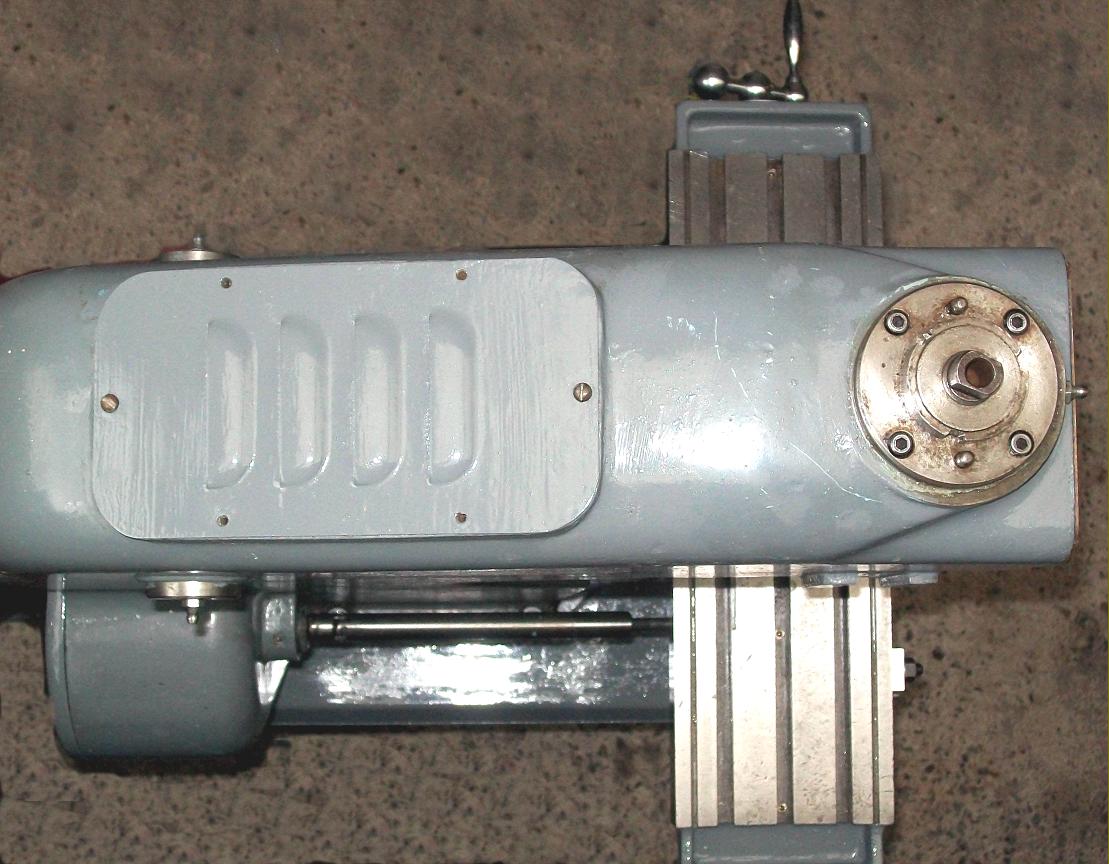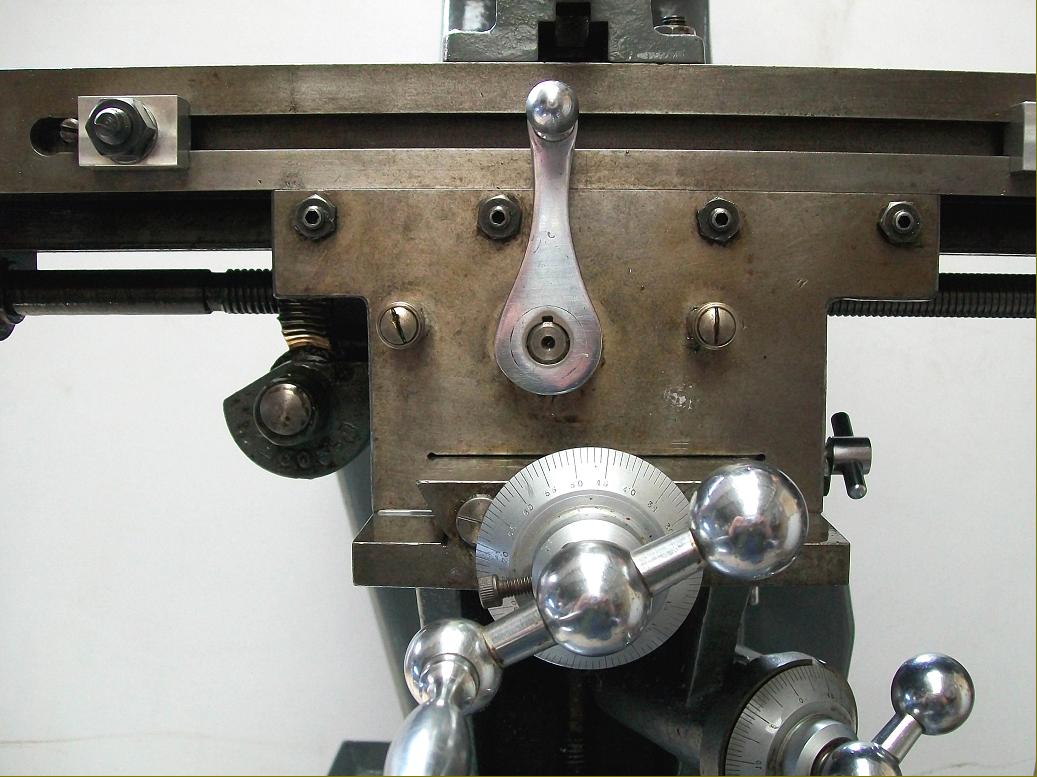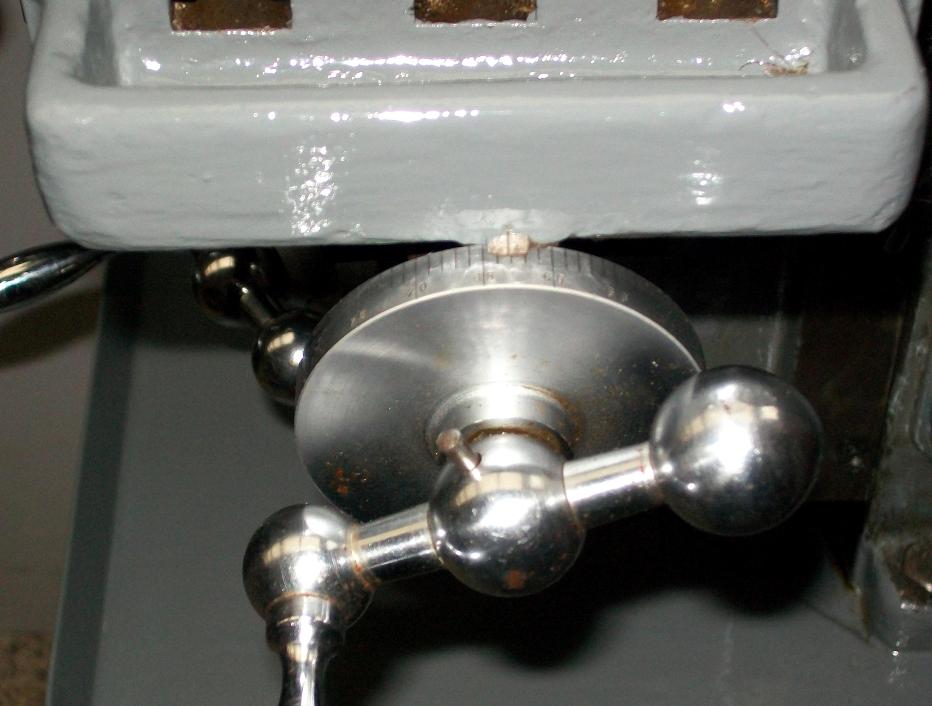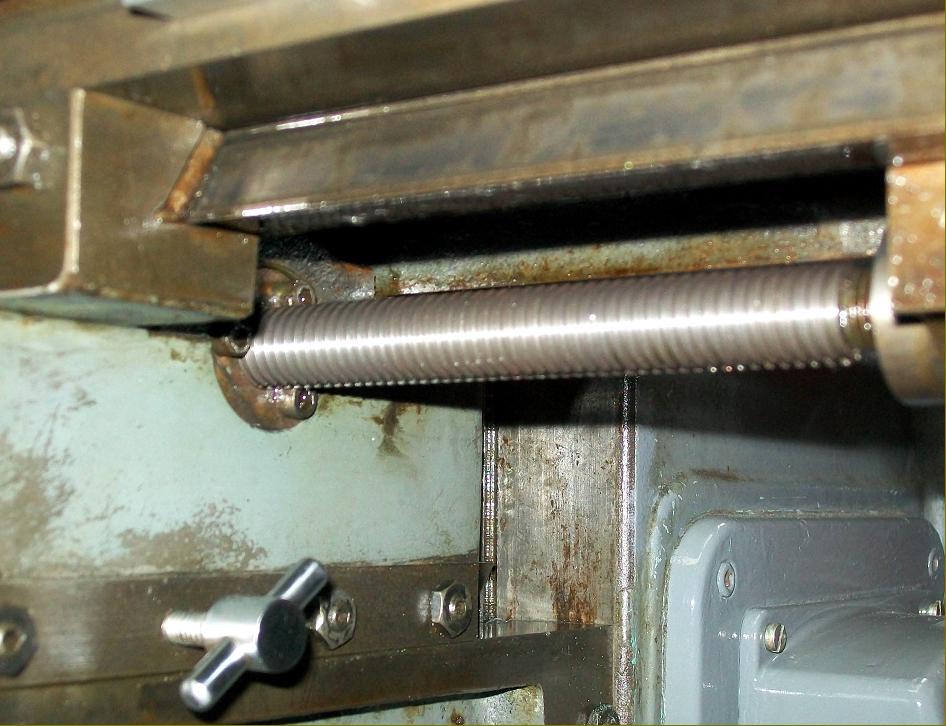George Taylor Home Page
Introduced during the late 1930s, the Mk. 2 version of the Geo. Taylor miller was a completely revised machine distinctly different to the earlier version. It was engineered with an enclosed drive system, a modified knee assembly and a much more massive head holding a precision ground and heat-treated spindle with its lower end running in tapered phosphor bronze bearings and its upper end in a ball race - with a hardened steel split washer to take the thrust. The old fashioned and awkward-to-operate feed handles were replaced by proper balanced types and finely engraved, satin-chromed micrometer dials fitted - that on the table's longitudinal feed screw being especially large.
Four spindle speeds were provided of 430, 740, 1220 and 2090 r.p.m. from a 945 r.p.m. 1 h.p. motor mounted in the base of the machine and driving through Brammer-type link belt. A neat solution to driving the table's power feed (longitudinal only) was to use a V-belt power take-off from the main drive pulley, the feed rates varying from a slow of 0.5" to a fast of 10" per minute. Unfortunately, as the drive for the table was taken from the driven pulley, not the motor shaft, as the spindle speed increased so did the rate of table feed. The distance from the spindle centre to the column was 8" and the maximum clearance beneath the nose 10".
Fitted with adjustable automatic stops the power-feed table had a working surface of 17.75" x 5.5"; the longitudinal travel was 8.75", the cross 3.5" and the vertical 8.25". Mk. 1, through a 3-speed gearbox powered from the main spindle - an inexpensive system to engineer but one that meant the feeds increased in speed as the spindle ran faster. The miller stood 61" high with a depth of 33" and a width of 27". Its approximate weight was 728 lbs.
Fitting new spindle bearings - the following is the experience of an owner:
Removal of the spindle was straight forward enough: remove the nut from the top, turn up a dolly to prevent injury to the threads and apply hammer. The middle bearing ( upper bearing, lower yoke) separated, the inner race staying on the shaft, the outer race staying in the yoke. The race that stayed in the yoke was worn so, inner and outer race numbers noted, a new one was one ordered - a Hoffman ls12ac at (in 2021) £133. Research showed a ljt1-1/4 1 was a direct equivalent at £23.42 so that was ordered and arrived a couple of days later.
Not giving much thought to assembly sequence, I put the bearing into it's housing thinking that it would be possible to raise this spindle through the bottom yoke, place the drive key in position, lower it and position the pulley. Oh, how wrong that was! By the time the spindle is through the bottom yoke, it's through the top as well - at that point I sought your advice. So, after a good coat of looking, I realised that it must have gone together in the same way it came apart i.e. the middle bearing separated outer race into the housing and the inner race onto spindle, I could not see any other way. I then realised that the bearing I had bought was equivalent in dimensions, but not construction. The Hoffman has a solid brass cage, so all the balls are in position on assembly and it sort of 'springs' together (I've put it back together to check this). The ltj1 has a steel cage so the balls can be clustered together to insert the inner race, then spaced out and caged from either side allowing bigger lips on the races. I tried to disassemble it, to no avail. Increasingly forceful ' taps' with the hammer convinced me it was not meant to come apart and I would do damage if I continued. Another strong coat of looking at! Well, if the keyway extended to the end of the journal, the key could be fitted in the pulley and the spindle pushed up into it, if you could line it up. Out with the lathe milling slide, off with the tool post on the Smart & Brown lathe and, a few minutes later, the key way was extended.
The key was quite a force fit in the pulley so, with a chalk mark on the pulley and one on the top of the spindle, all the bits were loosely in place. With a lump of wood on the table, the vertical lift was slowly operated. I realised that the two chalk marks were unlikely to be dead accurate so, when proceedings came to a halt, I lowered the table half a turn. Then, holding the spindle still, I turned the pulley a little each way and felt it locate. Then back to lifting the table until the spindle was through far enough to put the nut on and pull the lot together.
BTW--there are felt seals in the yokes and, although these were intact, I replaced these with ordinary "O" rings with a bit of tin strip behind one which was a bit slack. The rings are holding grease at the moment--but how long they will last is yet to be seen. With the belt and guards replaced I did a couple of test cuts all was good, and it is now very quiet.


















